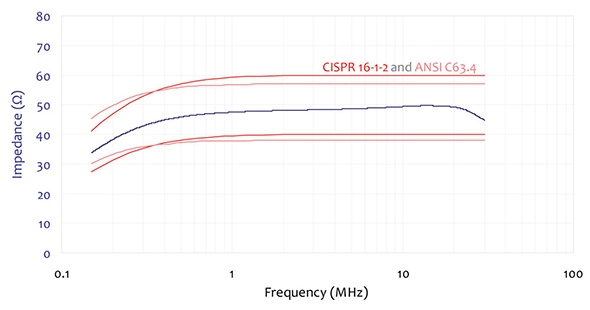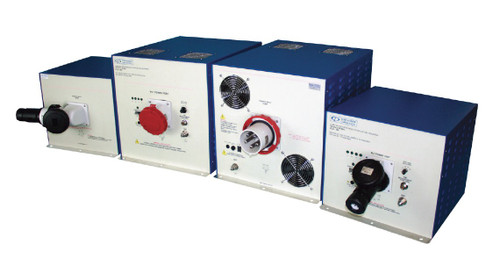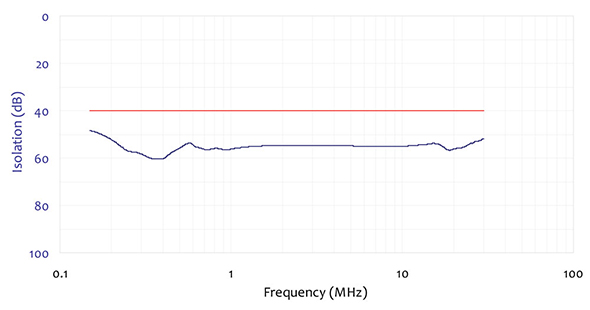Overview
- provide a defined, stable impedance across the measurement frequency range;
- isolate the EUT and measurement circuit from the power source, thereby minimizing its influence on the measurements; and,
- couple the disturbance voltages to the coaxial measurement port, which connects to the measuring instrument.
The LISNs use air-core inductors to prevent saturation and permeability variation. The mounting plates are left unpainted in order to facilitate connection to earth ground in their installation, which is essential due to high leakage currents. The side panels for each LISN are louvered for cooling purposes. The LI-3P-163 and LI-3P-1100 also include two internal cooling fans operated by a switch on the rear panel.
Remote or Local Operation
Remote switching of the line under test (L1, L2, L3, N) is performed using the RLI-100 Remote LISN Interface, which controls the LISN via fiber optic connection.
Remote switching of the line under testRemote switching of the line under test
In addition to the remote method, the line under test can also be selected using the mechanical, four-position switch located on the front panel of the LISNs. Using either switching method, the lines which are not selected are internally terminated into 50 ohms, while the selected line is terminated by the 50 ohm input impedance of the measuring instrument.
Calibration
Each LISN is individually calibrated in compliance with the relevant requirements of CISPR 16-1-2 and ANSI C63.4. Impedance, Phase, Isolation, and Insertion Loss data is supplied with each unit, along with the certificate of calibration. Recognized ISO 17025 accredited calibration is also available upon request.
Typical Data
 Typical Impedance Data |  Typical Phase Data |
 Typical Insertion Loss | Typical Isolation Data |









